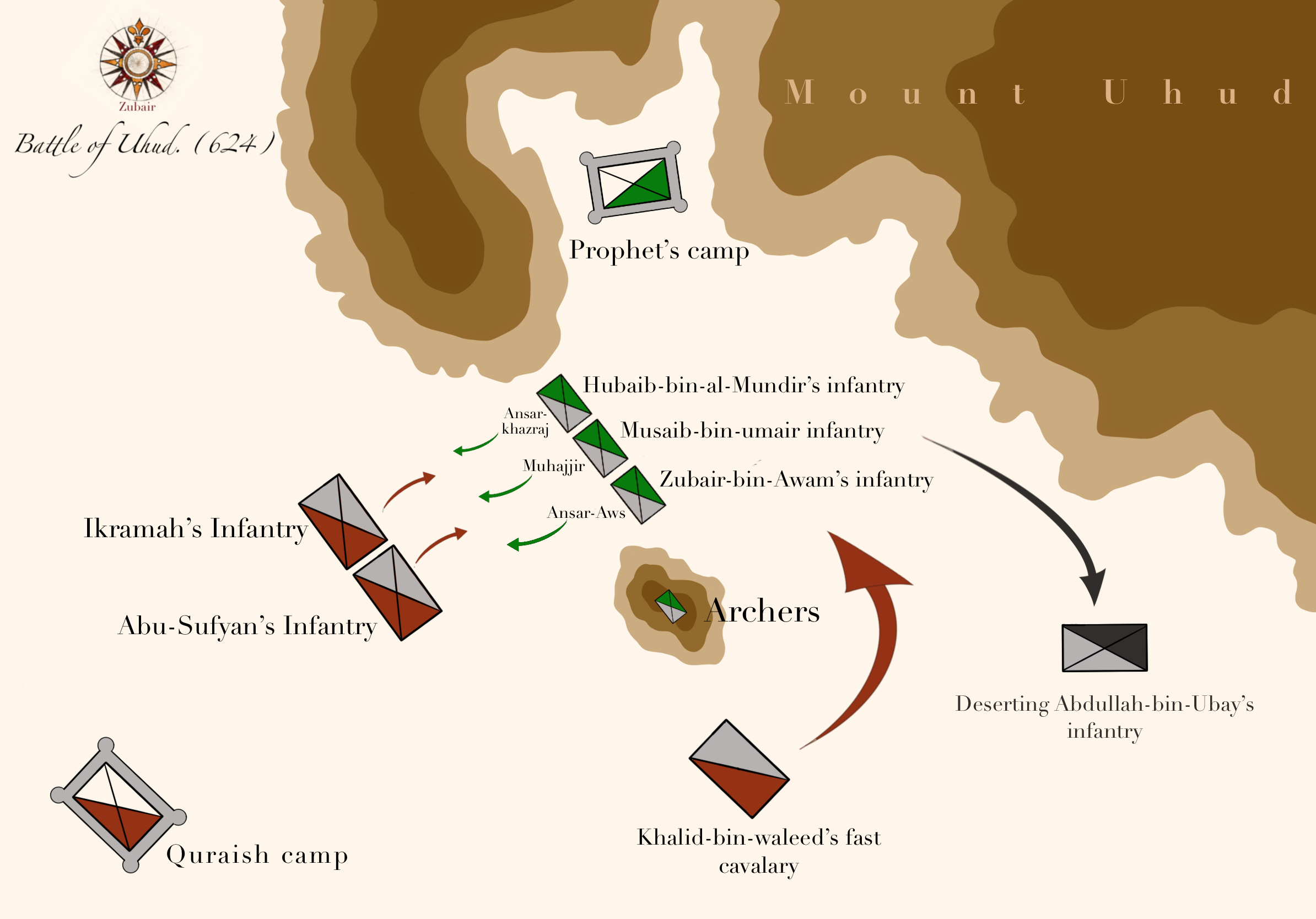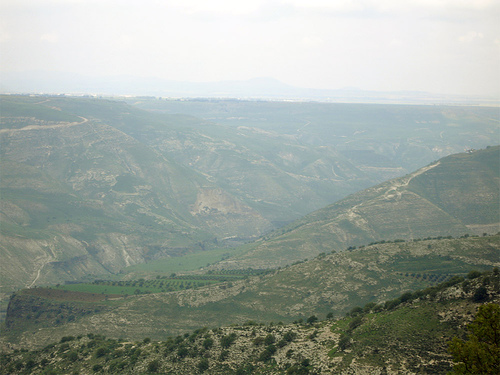|
Battle Of Uhud
The Battle of Uhud ( ar, غَزْوَة أُحُد, ) was fought on Saturday, 23 March 625 AD (7 Shawwal, 3 AH), in the valley north of Mount Uhud.Watt (1974) p. 136. The Qurayshi Meccans, led by Abu Sufyan ibn Harb, commanded an army of 3,000 men toward Muhammad's stronghold in Medina. The battle was the only battle throughout the Muslim–Quraysh War in which the Muslims did not manage to defeat their enemy and it came just a year after the Battle of Badr. Abu Sufyan became the ''de facto'' leader of the Quraish after the death of Amr ibn Hishām at Badr nine months prior. Wanting to avenge the Meccan's losses at the Battle of Badr, he marched upon Medina from Makkah on 10 December 624 AD with a force three times stronger than that of the Meccans at Badr. Another reason for the battle was to protect the trade route of Abu Sufyan's caravans. The Battle of Uhud was the second military encounter between the Meccans and the Muslims and the first one in which the Muslims were on the ... [...More Info...] [...Related Items...] OR: [Wikipedia] [Google] [Baidu] |
Muslim–Quraysh War
The Muslim–Quraysh War was the six-year-long military and religious conflict in the Arabian Peninsula between the early Muslims led by Muhammad, and the Arab pagan Quraysh tribe. The conflict started in March 623 with the Battle of Badr, and concluded with the fall of the Quraysh tribe and the Conquest of Mecca. Muslims believe Muhammad began receiving revelation around 610. He preached Islam in secret for three years, before openly preaching the religion. Subsequently, the early Muslims of Mecca faced persecution at the hands of the Quraysh. After being threatened with murder by the Quraysh, Muhammad received pledges of protection from the Ansar of Yathrib. He then allowed his followers to emigrate to the city, before leaving for Yathrib in 624 himself. Following his migration, Muhammad took to intercepting the caravans of the Quraysh as a means of retaliation and compensation for the wealth lost by his Meccan companions. The Battle of Badr took place in March 624, when M ... [...More Info...] [...Related Items...] OR: [Wikipedia] [Google] [Baidu] |
Amr Ibn Al-As
( ar, عمرو بن العاص السهمي; 664) was the Arab commander who led the Muslim conquest of Egypt and served as its governor in 640–646 and 658–664. The son of a wealthy Qurayshite, Amr embraced Islam in and was assigned important roles in the nascent Muslim community by the Islamic prophet Muhammad. The first caliph Abu Bakr () appointed Amr as a commander of the conquest of Syria. He conquered most of Palestine, to which he was appointed governor, and led the Arabs to decisive victories over the Byzantines at the battles of Ajnadayn and Yarmouk in 634 and 636. Amr launched the conquest of Egypt on his own initiative in late 639, defeating the Byzantines in a string of victories ending with the surrender of Alexandria in 641 or 642. It was the swiftest of the early Muslim conquests. This was followed by westward advances by Amr as far as Tripoli in present-day Libya. In a treaty signed with the Byzantine governor Cyrus, Amr guaranteed the security of Eg ... [...More Info...] [...Related Items...] OR: [Wikipedia] [Google] [Baidu] |


